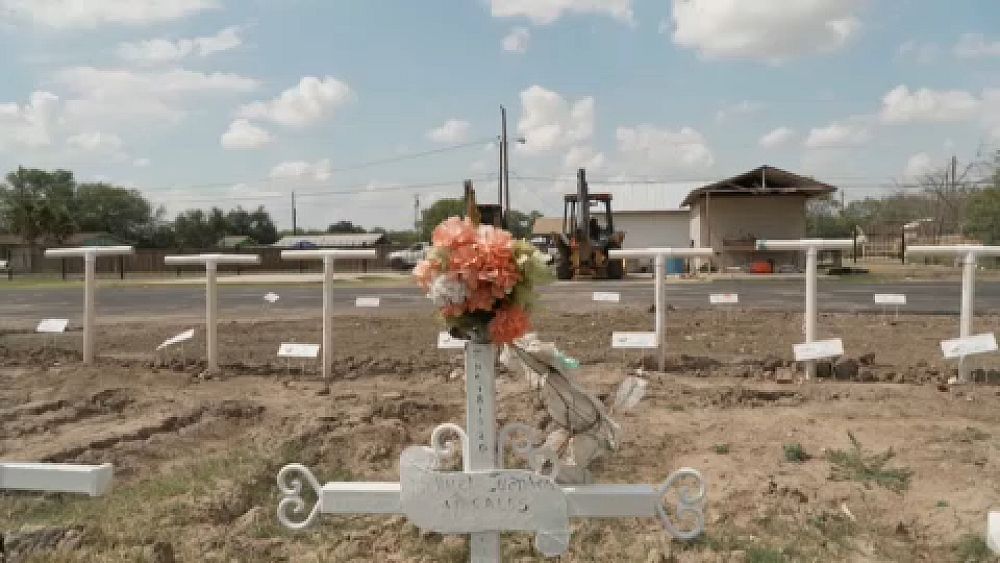This is the Rio Grande. Its more than 3,000 kilometers cross the southern United States and northern Mexico.
It is one of the most frequented border crossings by migrants trying to reach the United States, but it is also one of the most dangerous in the world due to the inhospitable geography of its territory.
Up to September of this year it is known that about 700 migrants died during the journey, but many others end up drowned, dehydrated or abandoned on huge ranches without ever knowing who they were.
Drowning is a leading cause of death on this route which, according to estimates by the International Organization for Migration (IOM), has claimed over 3,000 lives since 2014.
In the Texas border town of Eagle Pass, the municipal cemetery is littered with crosses that mark the graves of dozens of men and women whose American dreams have ended up in anonymous graves.
Along with the offerings, the locals place small plates labeled “John Doe” which is used in the country to refer to an unidentified person.
A reality that even the Brooks border county sheriff knows very well. He is nicknamed “The Undertaker” because he started collecting the remains of deceased migrants in 2009. He also collects information on these losses. Since then, there have been more than 900 registered cases.
“The migrants are not in adequate conditions to make the journey“says the sheriff.
In Webb County, South Texas, coroners receive human remains and personal belongings. They extract DNA samples to try to identify victims, but they don’t always succeed.
Chief coroner Corinne Stern explains this cases of anonymous migrants’ bodies are more and more frequent.
On the other side of the border, migrants continue to arrive despite being aware of the risk of crossing it. Going back is not an alternative many of them say.
“You have to continue, there is no way out to return, there is no alternative to return. Nobody returns”explains Nataly Lugo Rincón, a Venezuelan migrant.
Crossing the border is a journey of no return for many.

![[이태원 참사] The Pope prays for the victims of tragic accidents, including young people [이태원 참사] The Pope prays for the victims of tragic accidents, including young people](https://img0.yna.co.kr/photo/cms/2022/04/18/14/PCM20220418000014109_P4.jpg)
